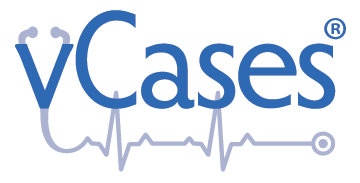“Education is not the learning of facts, but the training of the mind to think.”
(Attributed to Albert Einstein)
While this quote is a bit of a paraphrase from actual Einstein citations, the meaning is clear and one that he expressed often, albeit in slightly different words. Regardless, it is especially true in medical practice where facts abound and correct interpretation of those facts is necessary to make a diagnosis. Unfortunately, it isn’t often easy and there are many pitfalls along the way. As an emergency physician, I can attest to the difficulties. Patients presenting with medical problems may be unsure of how to describe their symptom, their past history may be ignored or not recognized as important, data collection by the examiner may be incomplete, and interpretation of the data may be flawed. Too often the end result is an incorrect diagnosis, inadequate or inappropriate management plans, an unsatisfied patient, and perhaps even malpractice action.
Critical thinking and problem solving are essential and fundamental skills for clinical expertise in medicine. However, these skills are not innate. Instead they must be developed and honed. Accrediting agencies such as the Liaison Committee on Medical Education (LCME) and the American Association of Medical Colleges (AAMC) agree that critical thinking emphasis should begin in undergraduate medical school programs. Incorporating these skills into medical training can take many forms. Didactic education can provide the basic building blocks, but true growth in critical thinking skills must be experiential. They must be practiced over and over, individually and in groups. Trial and error may be common in the early going, but mistakes can be minimized by real time feedback from expert sources.
Let’s begin at the beginning. When solving any problem, information must be gathered from all relevant sources. In medicine, this starts with the medical record to examine past personal and family medical history, diet and lifestyle, travel and work experiences. The right questions should then be asked of the patient and any significant others, and the answers followed up to gather more specific details. Diagnostic testing is often necessary, and the armamentarium of available tests grows and becomes more complex and costly each year, increasing the challenges of decision-making. There are also more subtle sources of information to be gathered, among them tone of voice, attitude, body positioning and facial expressions. While not as obvious, they are no less important pieces of the puzzle.
If done correctly, medical diagnosis training must analyze and then guide a student’s ability to imagine the possibilities, ask the right questions, recognize patterns and gather the right information. It must allow the student to make independent decisions and practice often enough so that knowing what steps to take becomes second nature. Ideally it should be flexible enough to allow individual and team approaches to problem solving, mimicking real life medical practice settings. And finally, analyses should be done sequentially so that educators can identify gaps in knowledge or procedures and map progress.
Developing the critical thinking skills necessary for physicians to reach efficient and accurate diagnoses can and should begin early in medical school and continue throughout. But it doesn’t end there. To maintain and refine their problem solving skills, physicians must of necessity be lifelong learners. Whether during medical school education or in post graduate training, finding a patient population to allow diagnostic skill practice is understandably quite difficult. And it is often inappropriate, particularly with anxious patients or with more unusual or life-threatening conditions. Yet physicians must be prepared to see such patients when they do appear.
In recent years, simulations using virtual patients have emerged as a viable solution for training and practice in critical thinking. To be effective, simulations must be realistic, time efficient and allow repetitive use. Ideally they must be convenient and allow use anytime and anywhere. They must provide real time feedback, so that mistakes and blind alleys can be recognized early and prevented later. Finally, simulations must also stress and guide structured approaches to problem solving. This means learning to make the right choices and decisions in order to narrow differential diagnoses.
When the mind is trained to think critically, knowledge comes more easily and guesswork need not be an option.
References:
Association of American Medical Colleges. Core Competencies for Entering Medical Students. Accessed online: https://www.aamc.org/admissions/dataandresearch/477182.corecompetencies.html
Association of American Medical Colleges. Core entrustable professional activities for entering residency. Accessed online: http://members.aamc.org/eweb/upload/Core EPA Curriculum Dev Guide.pdf
Harasym PH, Tsai TC, and Hemmmatt P. Current Trends in Developing Medical Students’ Critical Thinking Abilities. Kaohsiung J Med Sci 2008; 24: 341-55
Accessed online: https://www.sciencedirect.com/science/article/pii/S1607551X08701311
Kaur S. Critical thinking in medical education; When and How? BMJ 2017; 357:j2234 Accessed online: https://www.bmj.com/content/357/bmj.j2234/r-1
Liaison Committee on Medical Education.functions and structure of a medical school: standards for medical education programs leading to the MD Degree.
Accessed online: https://med.virginia.edu/ume-curriculum/wp-content/uploads/sites/216/216/07/2017-18_Functions-and-Structure_2016-03-24.pdf
Lucia VC and Swanberg SM. Utilizing journal club to facility critical thinking in pre-clinical medical students. Int J Med Educ.2018; 9:7-8 Accessed online: www.ncbi.nlm.nih.gov/pmc/articles/PMC834829
Morrisey B and Heildbrun ME. Teaching Critical Thinking in Graduate Medical Education: Lessons Learned in Diagnostic Radiology. J Med Educ Curric Dev. 2017 Accessed online: https://www.ncbi.nlm.gov/pmc/articles/PMC573296
National Research Council.(2001). Assessing 21st Century Skills:Summary of a Workshop.J.A.Koenig. Committee on the Assessment of 21st Century Skills. Board on Testing and Assessment, Division of Behavioral and Social Sciences and Education. Washington DC: The National Academies Press. Accessed online: https://www/sri.com/sites/default/files/publications/imports/21st_century_skills.pdf
Sharples JM. Critical Thinking in healthcare and education. BMJ 2017; 357:j2234 Accessed online: https://www.bmj.com/content/357/bmj.j2234
